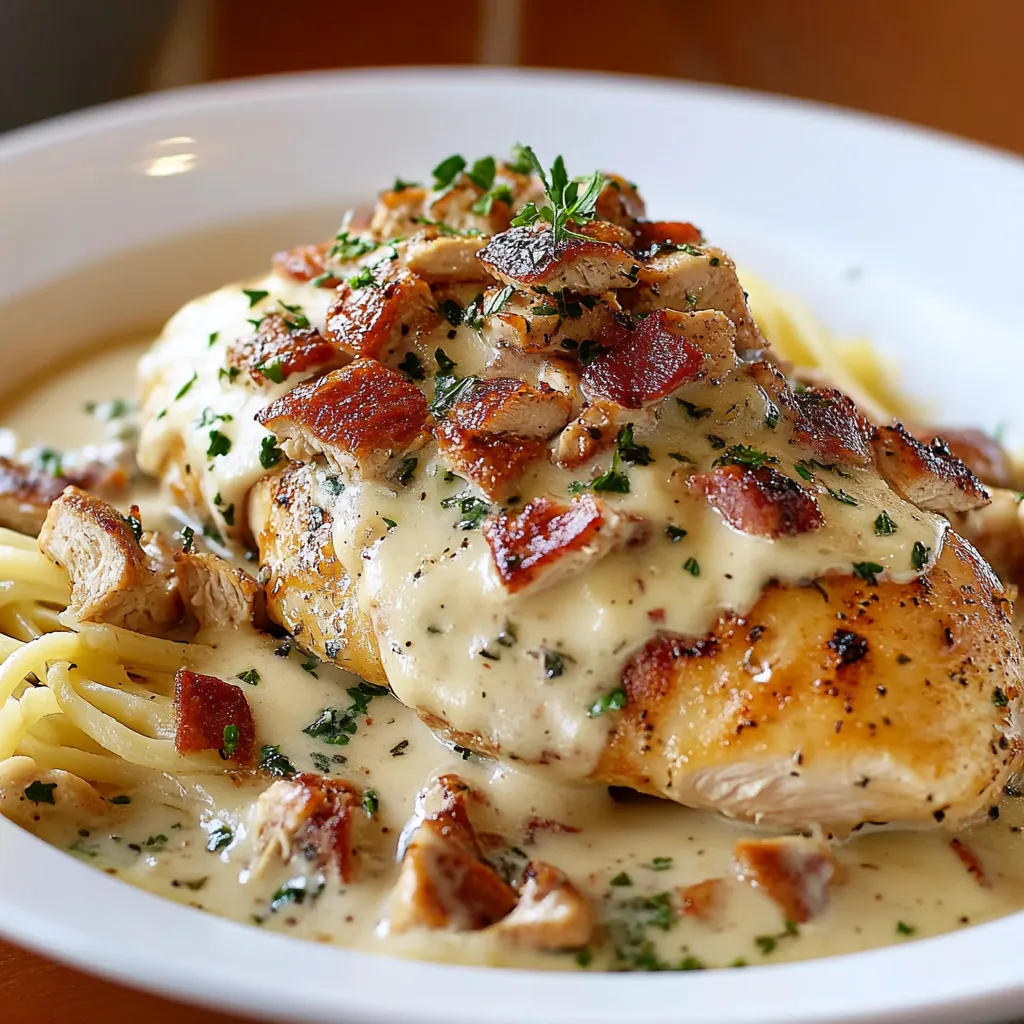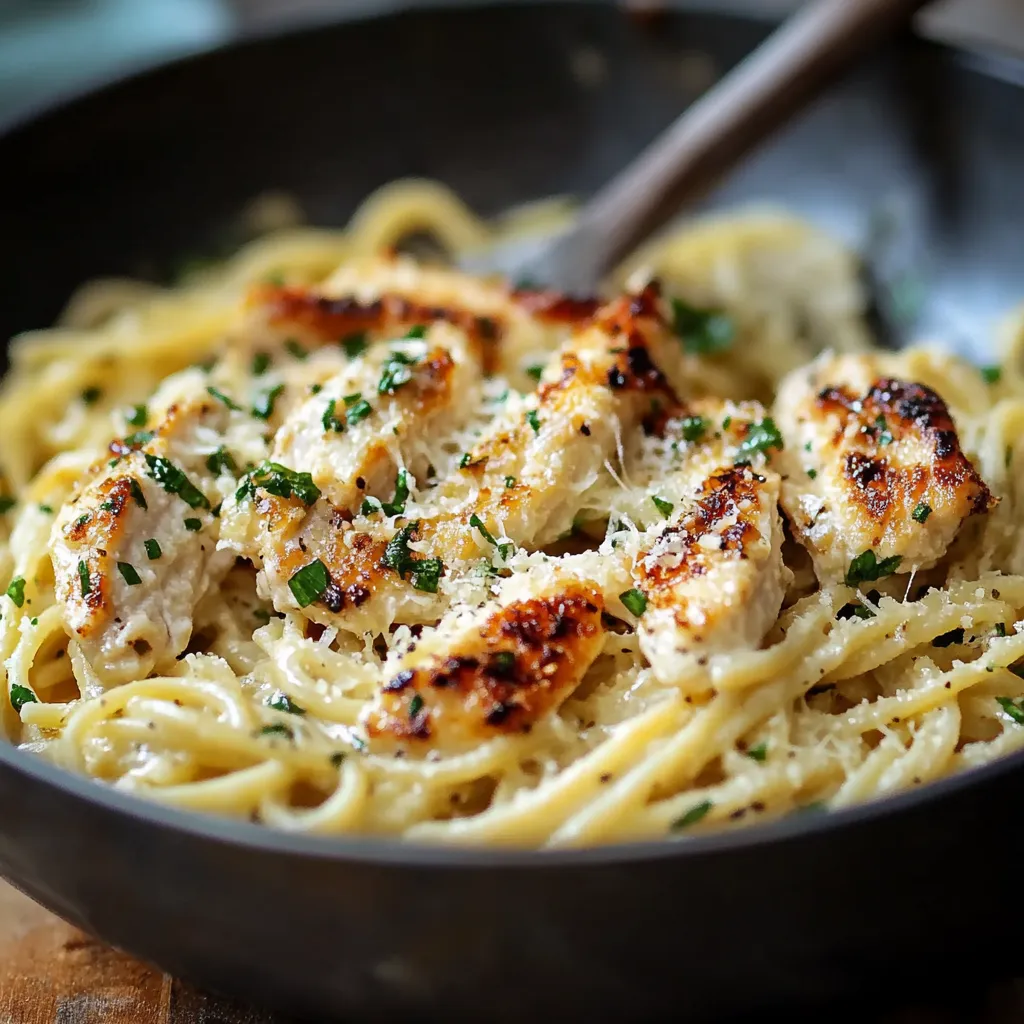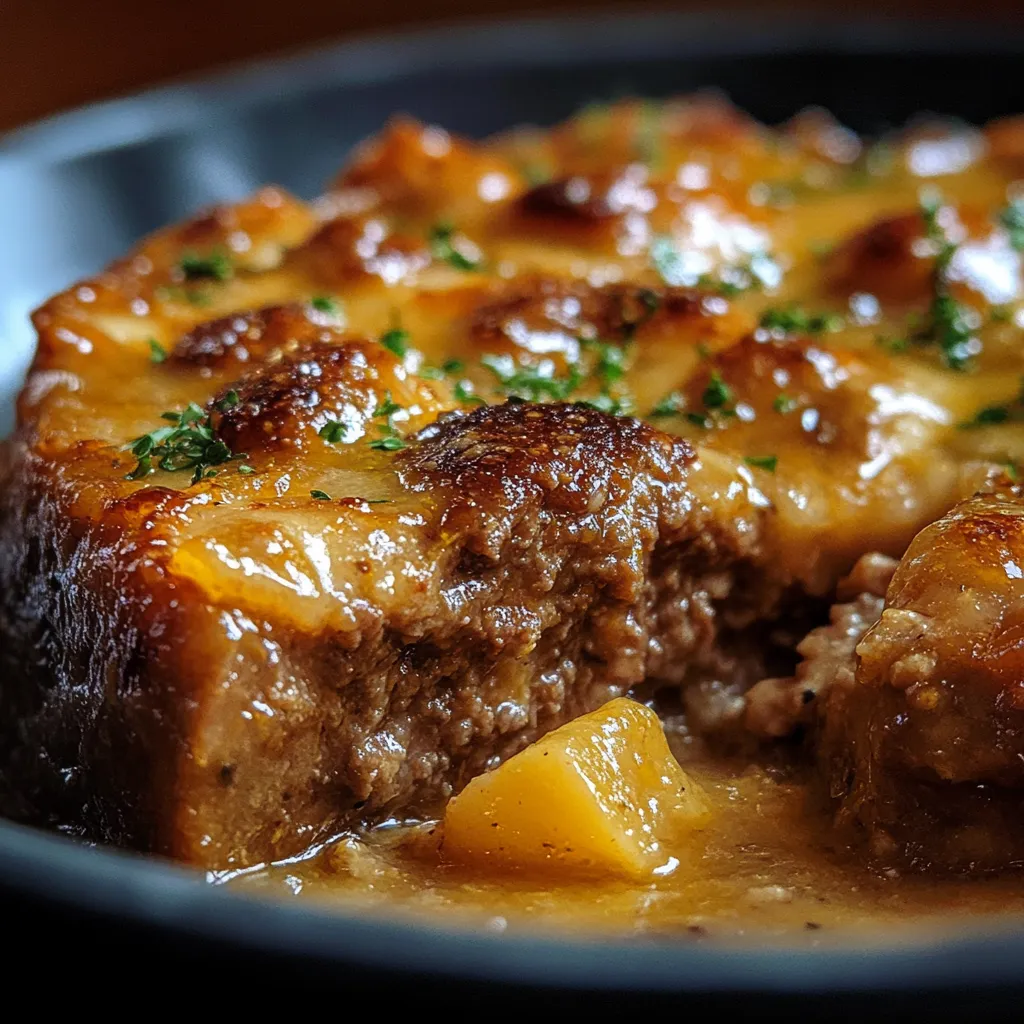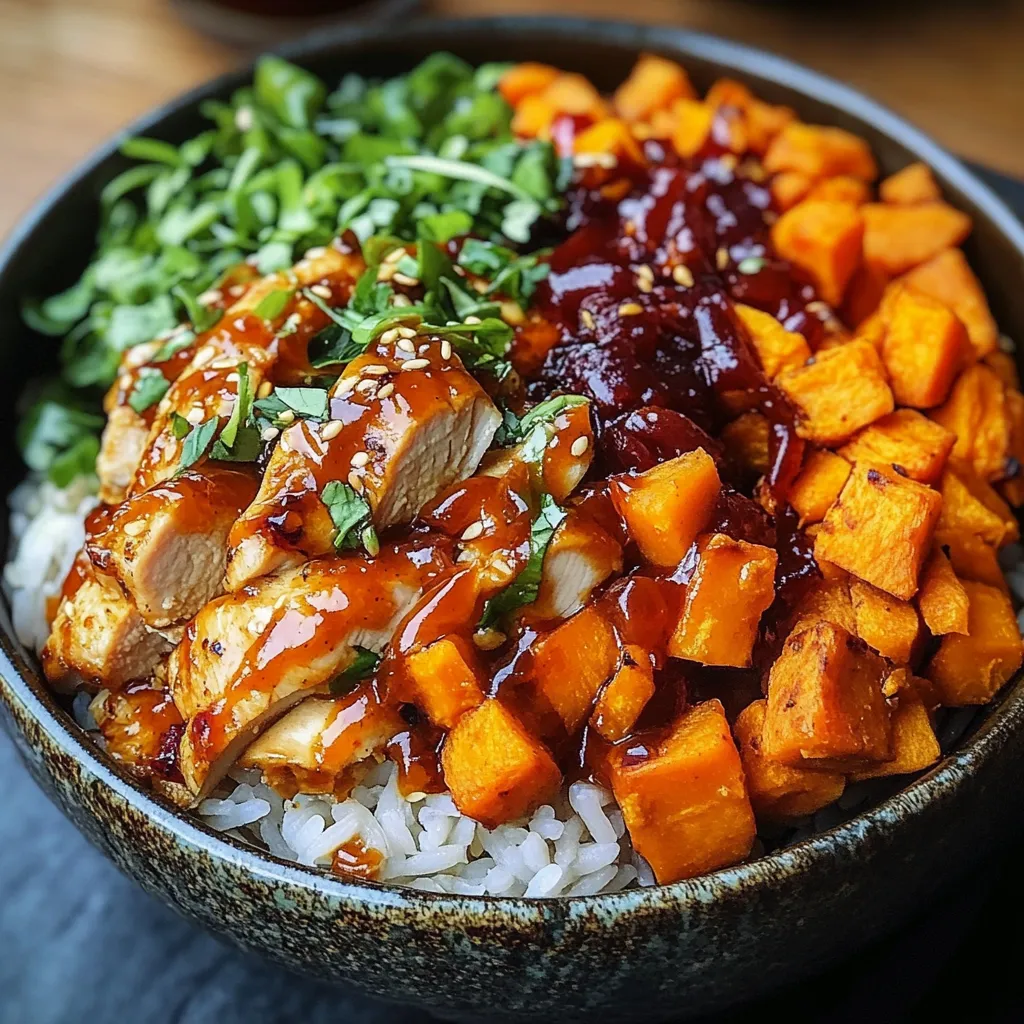The Alchemy Behind the Dish: Unlocking Flavor Secrets
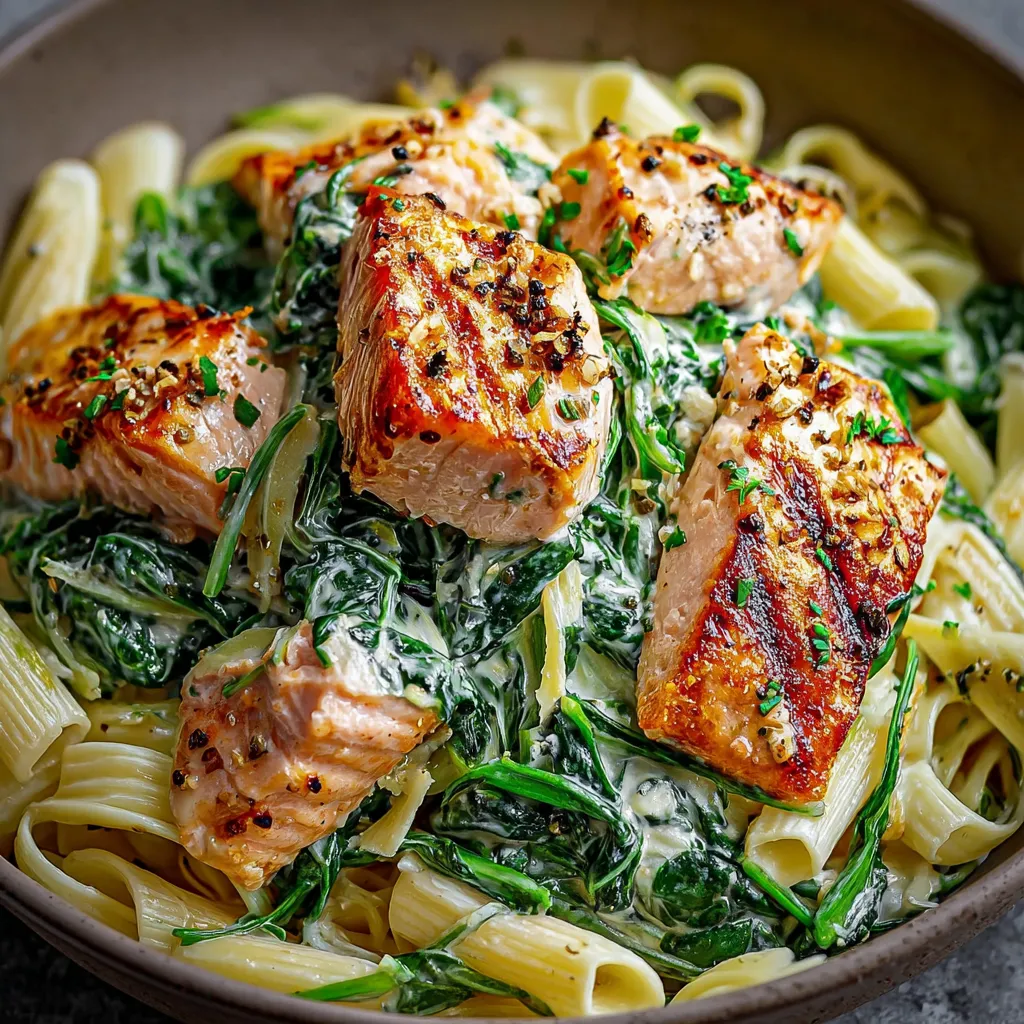 At its heart, great Salmon Spinach Pasta hinges on a few crucial scientific principles. First, protein denaturation. The salmon’s delicate flesh transforms as it cooks, moving from translucent to opaque and firm. Overcook it, and you’re left with dry, rubbery disappointment. The sweet spot is just barely cooked through, still moist and flaky. Second, emulsification. That creamy sauce? It’s a delicate balance of fat (butter or olive oil), liquid (pasta water and/or cream), and starch (from the pasta itself). Get the proportions right, and you have a silky smooth sauce that clings perfectly to every strand of pasta. Too little starch, and it’s watery. Too much, and it’s gluey. Third, the Maillard reaction. While we’re not searing the salmon to a deep brown crust in this recipe, a little browning around the edges significantly enhances its flavor, adding depth and complexity. Finally, understanding flavor pairings is key. Salmon’s richness is beautifully complemented by the earthy spinach and bright lemon, creating a harmonious symphony of tastes.
At its heart, great Salmon Spinach Pasta hinges on a few crucial scientific principles. First, protein denaturation. The salmon’s delicate flesh transforms as it cooks, moving from translucent to opaque and firm. Overcook it, and you’re left with dry, rubbery disappointment. The sweet spot is just barely cooked through, still moist and flaky. Second, emulsification. That creamy sauce? It’s a delicate balance of fat (butter or olive oil), liquid (pasta water and/or cream), and starch (from the pasta itself). Get the proportions right, and you have a silky smooth sauce that clings perfectly to every strand of pasta. Too little starch, and it’s watery. Too much, and it’s gluey. Third, the Maillard reaction. While we’re not searing the salmon to a deep brown crust in this recipe, a little browning around the edges significantly enhances its flavor, adding depth and complexity. Finally, understanding flavor pairings is key. Salmon’s richness is beautifully complemented by the earthy spinach and bright lemon, creating a harmonious symphony of tastes.
The Ultimate Salmon Spinach Pasta Recipe
Ingredients:
- 1 pound salmon fillet, skin removed and cut into 1-inch cubes
- 1 pound pasta (penne, farfalle, or fettuccine work well)
- 2 tablespoons olive oil
- 2 cloves garlic, minced
- 5 ounces fresh spinach
- 1/2 cup heavy cream
- 1/4 cup grated Parmesan cheese
- 1/4 cup reserved pasta water
- 2 tablespoons lemon juice
- 1 tablespoon butter
- Salt and pepper to taste
- Red pepper flakes (optional)
Instructions:
- Cook the pasta: Bring a large pot of salted water to a boil. Add the pasta and cook according to package directions until al dente. Reserve 1/4 cup of pasta water before draining.
- Sauté the garlic and spinach: While the pasta is cooking, heat olive oil in a large skillet over medium heat. Add garlic and sauté for about 30 seconds, until fragrant. Add spinach and cook until wilted, about 2-3 minutes. Season with salt and pepper. Remove spinach mixture from the skillet and set aside.
- Cook the salmon: In the same skillet, add the salmon cubes. Season with salt, pepper, and red pepper flakes (if using). Cook for about 3-4 minutes, until the salmon is cooked through and flakes easily with a fork, turning once halfway through. Be careful not to overcook.
- Make the sauce: Reduce the heat to low. Add heavy cream, Parmesan cheese, lemon juice, and butter to the skillet with the cooked salmon. Stir until the cheese is melted and the sauce is smooth. If the sauce is too thick, add a little of the reserved pasta water until it reaches your desired consistency.
- Combine everything: Add the cooked pasta and spinach mixture to the skillet with the salmon sauce. Toss to combine, ensuring the pasta is well coated.
- Serve: Serve immediately, garnished with extra Parmesan cheese and a squeeze of lemon juice, if desired.
My Salmon Spinach Pasta Pilgrimage: Trials and Triumphs
The Soggy Salmon Saga
My first few attempts were a disaster. The salmon was either overcooked and dry, or undercooked and…well, not pleasant. I tried searing it separately and then adding it to the pasta, but that resulted in uneven cooking and a less integrated flavor. The biggest challenge was preventing the salmon from drying out while ensuring the pasta was perfectly coated in the sauce.The Watery Sauce Woes
Then there was the sauce. Initially, it was always too thin and watery, lacking that luscious creaminess I craved. Like many of you, I initially thought that simply adding more cream would solve the problem. Wrong! It just made it heavy and bland. I needed a way to thicken the sauce without sacrificing flavor. The inspiration came when I was making Garlic Parmesan Spaghetti.The “Aha!” Moment: Pasta Water to the Rescue
Then, I had an “Aha!” moment while recalling my attempts to create a memorable Marry Me Chicken Pasta. The key, I realized, was the pasta water! The starchy water not only helped to thicken the sauce but also emulsified the fat and liquid, creating a velvety texture that clung beautifully to the pasta. It also added a subtle, savory flavor that enhanced the overall dish. Using the starchy water was the trick I needed to unlock the secret!The Lemon Zest Revelation
One final tweak was adding a touch more acidity. While lemon juice provided a bright note, it sometimes felt a little one-dimensional. Adding a small amount of lemon zest to the sauce elevated the dish with a more fragrant and complex citrus flavor. This was inspired by a similar technique I used to enhance a batch of Spinach Mushroom Lasagna I made previously.The Foolproof Technique: The 5 Commandments of Salmon Spinach Pasta Perfection
Here’s the method I’ve perfected to guarantee restaurant-quality Salmon Spinach Pasta every time:- Salt the pasta water generously. This seasons the pasta from the inside out and helps to create a flavorful sauce.
- Don’t overcook the salmon. Cook it until it’s just barely cooked through, and it flakes easily with a fork. Remember, it will continue to cook slightly in the sauce.
- Reserve that pasta water! It’s the secret ingredient that will transform your sauce from watery to wonderfully creamy.
- Adjust the sauce consistency to your liking. Add more pasta water if the sauce is too thick, or simmer it for a few minutes longer if it’s too thin.
- Taste and season. Don’t be afraid to adjust the salt, pepper, and lemon juice to your liking. A little extra Parmesan cheese never hurts, either! You could even try adding some smoky spice inspired by Smoky Chipotle Cheesy Chicken Pasta.
What is the key to achieving a creamy, non-watery sauce for Salmon Spinach Pasta?
The key is to reserve some of the pasta water. The starch in the water helps to thicken the sauce and emulsify the fat and liquid, creating a velvety texture.
How do you prevent the salmon from becoming overcooked and dry in this recipe?
Cook the salmon until it’s just barely cooked through and flakes easily with a fork. Remember that it will continue to cook slightly in the sauce.
What are the key ingredients to enhance the flavor of Salmon Spinach Pasta?
Salmon’s richness is beautifully complemented by the earthy spinach and bright lemon, creating a harmonious symphony of tastes. Also, adding lemon zest is a great final touch!
What type of pasta is recommended for Salmon Spinach Pasta?
Penne, farfalle, or fettuccine work well for Salmon Spinach Pasta.
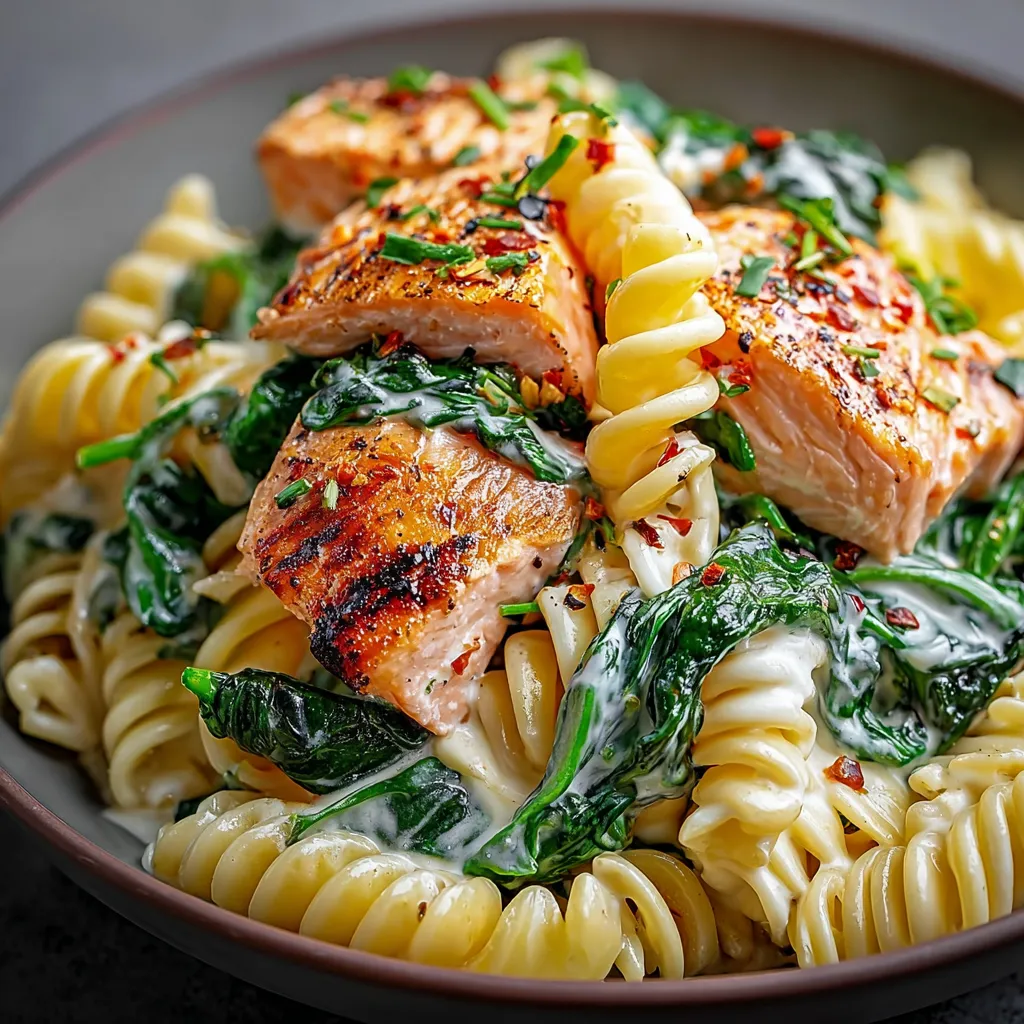
Salmon Spinach Pasta Easy Dinner
Ingredients
Equipment
Method
- Cook the pasta: Bring a large pot of salted water to a boil. Add the pasta and cook according to package directions until al dente. Reserve 1/4 cup of pasta water before draining.
- Sauté the garlic and spinach: While the pasta is cooking, heat olive oil in a large skillet over medium heat. Add garlic and sauté for about 30 seconds, until fragrant. Add spinach and cook until wilted, about 2-3 minutes. Season with salt and pepper. Remove spinach mixture from the skillet and set aside.
- Cook the salmon: In the same skillet, add the salmon cubes. Season with salt, pepper, and red pepper flakes (if using). Cook for about 3-4 minutes, until the salmon is cooked through and flakes easily with a fork, turning once halfway through. Be careful not to overcook.
- Make the sauce: Reduce the heat to low. Add heavy cream, Parmesan cheese, lemon juice, and butter to the skillet with the cooked salmon. Stir until the cheese is melted and the sauce is smooth. If the sauce is too thick, add a little of the reserved pasta water until it reaches your desired consistency.
- Combine everything: Add the cooked pasta and spinach mixture to the skillet with the salmon sauce. Toss to combine, ensuring the pasta is well coated.
- Serve: Serve immediately, garnished with extra Parmesan cheese and a squeeze of lemon juice, if desired.

